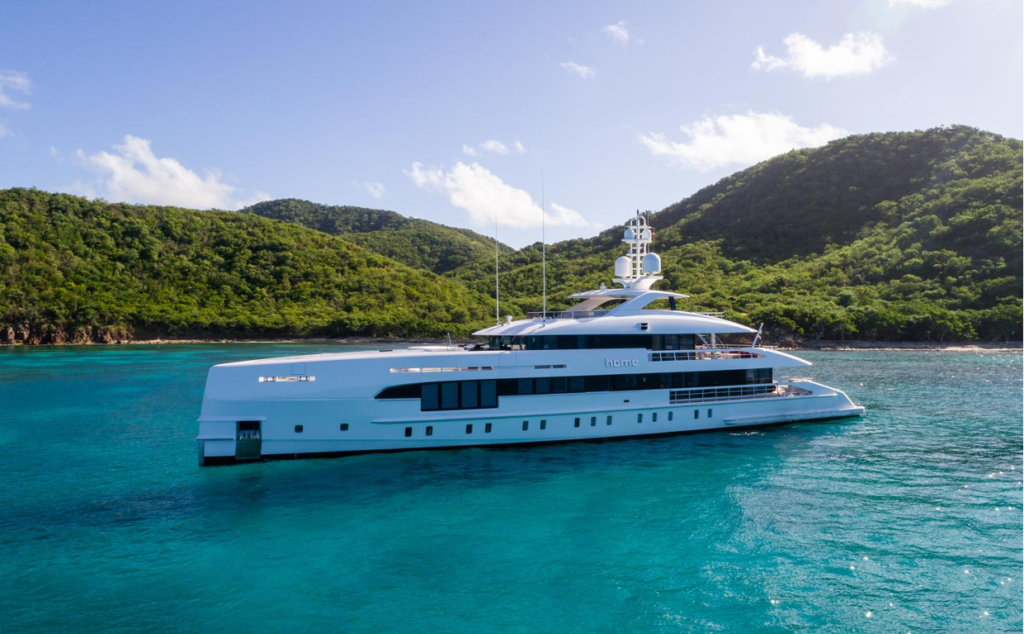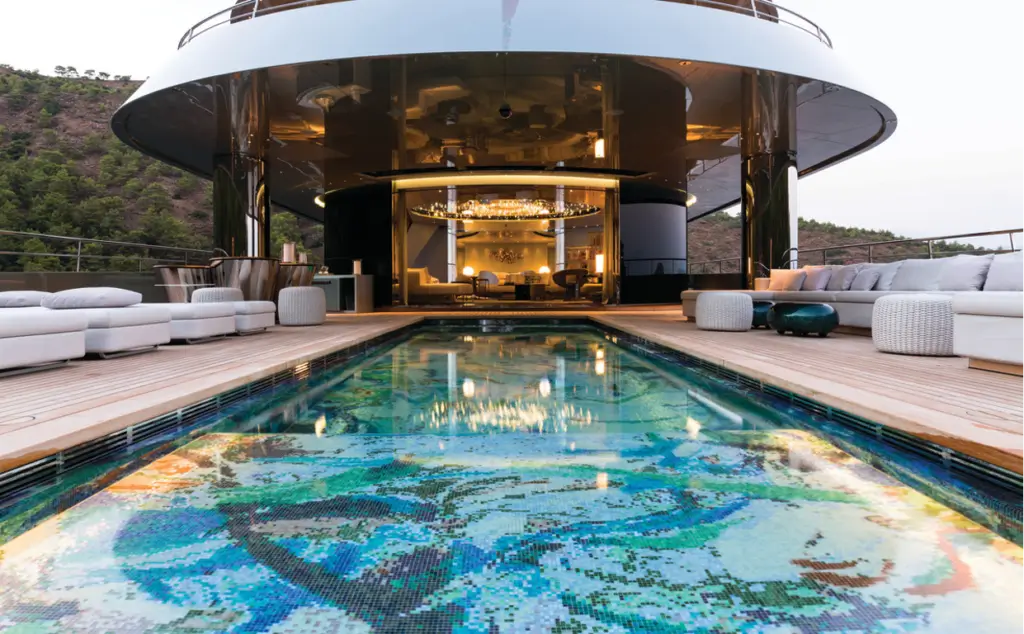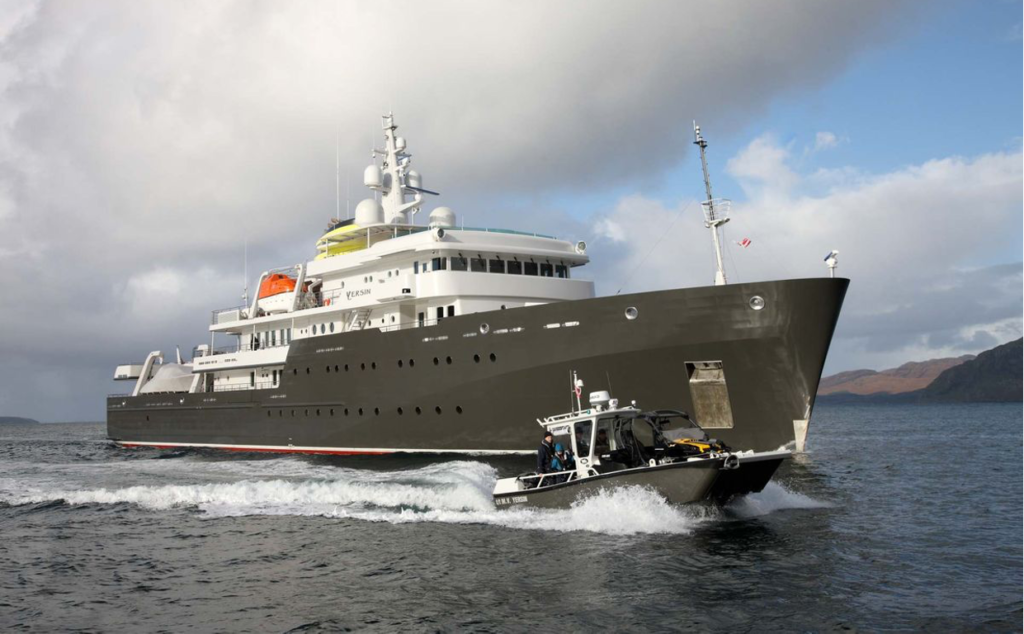Sustainability in yachting

In the race for innovation, yachting companies are harnessing new designs, technologies, and techniques in their quest to appeal to clients who are becoming increasingly environmentally conscious.
Media talk has often shied away from the carbon footprint that goes with owning or chartering a luxury superyacht, with a larger focus on the eradication of single-use plastic and the impact of microplastics on the marine environment.
The United Nations Sustainable Development Goals are a blueprint for the global challenges we all face and the actions that individuals and companies can take to achieve a more sustainable future. With many yacht owners and charter guests demonstrating eco-consciousness it’s fitting to stay on top of the changes that are evolving the superyacht sector.
Can we expect HNW and UHNW spending and lifestyle habits to transform the industry?
Building, owning, or chartering a superyacht does not traditionally match well with sustainability. However, the shift with travel plans, consumer habits and their perceptions of luxury yachting since 2020, has led to a laser focus on sustainable yachting options.
Superyacht industry discussions about a green revolution simply won’t do anymore – yachting companies are no longer serving a niche group of clients but those clients that are thinking about environmentally friendly products, renewable energy and ecotourism and sourcing companies that match their ethos.
Sustainability in yacht building & design
Shipyards, designers, and clients are understanding the importance of sustainable practices when designing and building yachts. We have seen innovations and disruptive concepts across design and manufacturing from lighter materials for yacht construction, enhanced hull design to reduce fuel consumption or installing new engines or generators to lower noise emissions.
Feadship announced they intend for their new builds to use only hybrid power or be fully electric by 2025, lowering their environmental impact. It’s a bold move, however, at the core of any yacht design, there should be comfort, seaworthiness, and safety which Feadship has proven credentials for.
Oceanco aims to more than halve their impact on the environment compared to the benchmark by 2030, aiming for 100% of their electricity usage to be supplied by renewable energy sources. By 2030, they intend to be 100% waste-free or circular across the entire supply chain.
Research and development are progressing into the advancement of solar power, wind power, hybrid or diesel-electric propulsion. Bannenberg & Rowell in collaboration with Dutch studio Azure Naval Architects integrated hybrid propulsion into Project Isola, a 50-metre sub-500 GT vessel, and Sinot Yacht Architecture & Design unveiled their Aqua concept last year with a hydrogen propulsion system.
In April, Lürssen announced the sale of its first superyacht to be powered by hydrogen fuel-cell technology, which will allow the owner to spend more than 15 nights at anchor or travel more than 1,000 nautical miles without releasing any harmful pollution. Lürssen’s recent vessels feature a compact silence with an integrated SCR filter and additional filter to lower nitrogen oxides, soot and noise emissions below current regulatory limits. Additionally, Lürssen is the first yacht builder to utilise waste engine heat to operate a yacht’s onboard desalination system for drinking water.
Compromises can arise with yacht design and managing an owner’s expectation against the aesthetic appeal, resource availability and transport costs for materials such as aluminium, wood or batteries.
Efforts are also going into end-of-life thinking with the design and manufacturing process to reduce the full environmental impact of each yacht. TYNC Design develops and engineers yachts made from 80% recyclable materials. Every boat they build can be broken down and separated at the end of its initial lifespan, which significantly reduces the number of boats sent to landfills.
Optimistically, there are various tools and assessments that can calculate the environmental impact of a vessel throughout its entire lifecycle. Future yacht projects for investment and profitability need to align with design and engineering policies that also protect and promote the marine environment.
Rethinking yacht interiors & onboard materials
Sustainability isn’t influencing naval architecture and exterior styling only, but interior design. Trends for yacht interior design for 2021 include nature-inspired – or biophilic – design and using materials that replicate rare resources yet they’re multifunctional and versatile.
Designers are mindful of using endangered or rare materials and are investing in sustainable alternatives such as flax, basalt laminates, rapidly renewing bamboo, banana plant veneers or mycelium fibres. Superyacht interiors are integrating LED lighting for its greater energy efficiency, and highlighting decorative objects that are ethically sourced yet still bring in the tones, colours and textures of surrounding coastlines in the Adriatic, Caribbean or Mediterranean cruising regions.
The positive changes are also visible in the charter sector with yachts and their crew implementing long-term changes onboard. Actions include eradicating the use of straws, plastic water bottles and plastic bags, using eco-friendly cleaning products and offering alternative options for guest amenities such as organic body products, reef-friendly sunscreen or bamboo grooming kits.
Charter guests are no longer impressed by gold-plated tapware and designer rugs, but the solitude to enjoy watching the sunset turn from orange to deep purple from the comfort of the owner’s suite balcony, or quality time snorkelling with their family without worrying about their sunscreen damaging the coral reefs.

HOME
Built by Heesen, HOME superyacht pairs a state-of-the art hybrid propulsion system with a proven Fast Displacement Hull Form by Van Oossanen Naval Architects to reduce her environmental footprint and propel her efficiency. This exceptional vessel can cruise in four different modes; an “eco-mode,” “quiet mode,” using electric motors, a “diesel mode,” and a “boost mode,” which combines diesel and electric for ultimate power cruising.
SAVANNAH
Launched in 2015 by renowned Dutch yard Feadship, SAVANNAH is a sustainable masterpiece, boasting the yard’s pioneering Breathe propulsion system. This industry innovation allows for five different operation modes from diesel and diesel-electric combinations to fully electric. However, even in diesel mode, SAVANNAH is highly efficient, offering fuel economies of thirty per cent thanks to her dynamic hull shape, and steep entrance angle.


YERSIN
Designed by Pierre-Jacques Kubis for private discovery voyages, YERSIN was constructed from 95% recyclable materials, including her recyclable resin decks that substituted wood for sustainable alternatives. One of the most advanced Explorers of her generation and CLEAN SHIP certified, YERSIN is equipped with filters on all engines that reduce NOx and SOx emissions by 99.8% and retain 99.8% of soot particles to keep her surrounding waters as clean as possible.
The Future of Sustainability in the Superyacht Industry
With the number of environmental regulations and emission control areas (ECA) increasing, and port requirements for limited emissions becoming more strict, the future challenges and threats to marine biodiversity from emissions and pollution is relevant to all yachting companies.
Sustainability isn’t just a trend, but a conscious movement. Some enterprises are forging a path to a better outlook ahead – The Water Revolution Foundation runs a number of activities to support sustainability in the yachting industry such as educational courses and yacht assessment tools, Blue Marine Foundation highlights collective action on a grand scale with the aim to see at least 30% of the world’s ocean under effective protection by 2030 and the other 70% managed in a responsible way and Yacht Carbon Offset has worked with yachting industry partners on a range of initiatives such as carbon offsetting and environmental consultancy.
The future is perhaps best embodied by the past because we have seen a number of yacht concepts no one could ever have imagined 15 years ago; it’s an era where sustainability is bringing something creative to the yacht design, charter and sales market in 2021. Sustainable development for the next generation of designers, engineers, manufacturers, stakeholders and owners who want to cut their emissions is as relevant today to a client enquiring about summer yacht charter destinations as it will be in the next 15 years.

